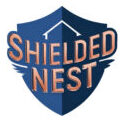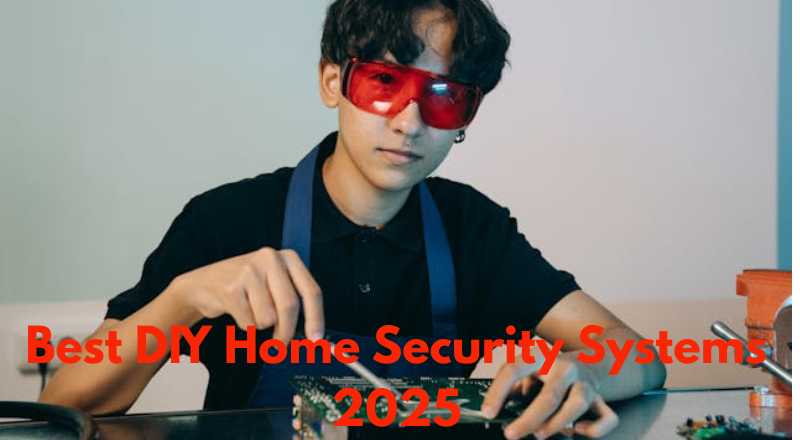Home security has become a priority in the modern-day environment. Luckily, we no longer require complex wires, bulky locks, heavy gates, or costly techs to install a security system. The arrival of the best DIY home security systems 2025 has entirely changed the manner in which we protect our homes.
These systems are not expensive, but they are intelligent and simple to install—no professional technician required for installation. You can do it by yourself without any issues. Be it in the United States or India, DIY home security is the intelligent approach for securing your family and properties.
In this article, we’ll explore the best DIY home security systems 2025, highlight their features, and guide you on choosing the right one for your home.
In the US, cloud-based systems and smart integrations are more common.
In India, you have options like CP Plus or Mi cameras in the case of cost-effective security or Godrej because of its reliability.
Support and warranties are usually great for global brands in the US.
What is the reason to select the best DIY Home Security Systems 2025?
Do-it-yourself security (DIY) type systems are becoming more popular.
Let’s find out, why do they make sense in 2025?
Save Money Compared to Professional Installations
One main reason is cost. Cost is less compared with other professional installations.
Easy to Install Without Technical Skills
Old-fashioned security systems usually involve professional installation at a high cost. In DIY kits, you can reduce the cost by installing it yourself without any professional assistance.
No technical expertise required for installations.
The majority of DIY systems have straightforward manuals and mobile applications. It is quick and easy to mount cameras, stick motion sensors, and connect all of this within minutes.
Smart Features for Modern Homes
The modern DIY systems have smart features such as voice commands and real-time mobile alerts and can be integrated with Alexa or Google Assistant.
Flexible and Expandable Security Options
Begin small with a camera and motion sensor, and add devices as your needs increase in the future.
Read More : Home Security Systems – Ultimate Guide
Key Features to Consider in a Best DIY Home Security Systems 2025
Please consider the following:
When selecting a DIY system.
Wireless Connectivity
Select systems that are compatible with Wi-Fi or Zigbee/Z-Wave. This avoids complicated wiring.
Mobile App Control and Remote Monitoring.
Ensure that the system has a mobile application where real-time monitoring will be done when you are out of the home.
Smart Integrations
It is voice-controllable, easily integrated with Alexa, Google Assistant, or Apple HomeKit.
Video Quality & Night Vision
Find HD or 4K cameras with a good view of the night that will allow them to see even during lowlight.
Motion Detection and Alerts
Intelligent motion sensors will alert you immediately when the area presents any unusual activity.
Storage Options
Select cloud storage (easy access at the cost of subscription) or local storage (no monthly fee).
Battery Backup
Wherever you are in the world, power cuts occur. A backup battery provides continuous security to your home without breaks.
Best DIY Home Security Systems 2025 - Our Top Picks
The following are the best DIY home security systems 2025 that are dependable, intelligent, and most importantly, simple to install:
Arlo DIY Security Systems
- Cameras are 2K and 4K wireless.
- Intelligent person, vehicles, and package motion detection.
- Alexa and Google Assistant work.
- Great option for US homes.
Ring Alarm DIY Security Kit
- A starter kit at an affordable price that includes sensors and a keypad.
- Complimentary with Ring video doorbells.
- Easy mobile app control.
- Perfect in apartments and US houses.
SimpliSafe Self-Install Security Systems.
- Free of charge plans, simple DIY installation.
- Professional monitoring (24/7) available (optional).
- Good for large homes.
Google Nest Secure (DIY-Friendly).
- Intelligent hub and sensors, and mobile notifications.
- Google Home works.
- Great consistency and simple installation.
Wyze DIY Home Security Systems (Low-End)
- Low-cost cameras and sensors.
- Provides cloud and local storage.
- Ideal for entry-level budgets.
India: best DIYsecurity systems.
- CP Plus—CCTV—Known to provide cost-effective CCTV systems.
- Godrej Security Solutions—an Indian smart lock and alarm company.
- Mi Security Cameras—Cheap and user-friendly to install, with application surveillance.
DIY Home Security Systems without Subscription
Advantages of "No-Subscriptions" Systems
- Save money every month.
- Store locally owned data.
Recommended Brands Offering Free Monitoring
Most individuals do not like paying monthly charges. Fortunately, a number of DIY solutions are subscription-free.
- Wyze (local storage option)
- Eufy Security (free of charge).
- CP Plus (low-end DVR-based in India)
Installation Tips for DIY Home Security Systems
- Here are some simple tips for setting up your system:
- Step-by-Step Setup Guide
- Install the mobile application of the system.
- Install the hub in the proximity of your Wi-Fi router.
- Install the mounted cameras in strategic points (front door, backyard, living room).
- Put up motion sensors around doors and windows.
- Check the system to ensure that alerts are active.
Best Places to Install Cameras and Sensors
- Front door (main entry point).
- Backyard or side gate.
- Living room or main hall.
- Parking zone.
- Close to valuable (safe, electronics).
Common Mistakes to Avoid
- Do not install cameras in higher positions (faces can not be seen properly).
- Do not point cameras at sources of bright light. (It reduces the visibility.)
- Check the strength of the Wi-Fi before fixing it permanently.
DIY home security systems USA versus India
The systems are not available and are priced differently in the US and India.
Popular Brands in the USA
Arlo, Ring, SimpliSafe, Google Nest, Wyze.
Affordable Options in India
CP Plus, Godrej, Mi, Qubo by Hero.
Pricing, Support, and Availability Differences.
Smart integrations and cloud-based systems are more widespread in the US.
In India, local brands and CCTV kits are cheaper.
Global brands tend to have more support and warranties in the US.
What DIY Security System to buy in 2025?
In the US, cloud-based systems and smart integrations are more common.
In India, you have options like CP Plus or Mi cameras in the case of cost-effective security or Godrej because of its reliability.
Support and warranties are usually great for global brands in the US.
11. Conclusion
In 2025, DIY home security systems will offer an affordable, flexible, and effective way to secure your home. DIY home security systems will be cheap, intelligent, and simple to set up. They allow you to have control of the safety of your home without spending a lot. You may be in the United States or in India, but you can find excellent alternatives that will suit all budgets and lifestyles.
Please note that in this article, wherever we talk about prices, they are approximate values only. For real present prices, please check with the corresponding company websites. Only we are providing guidelines on the prices.
Take control of your home’s safety today by choosing a DIY security system that fits your needs and budget. Whether you go for self-monitoring or professional services, securing your home has never been easier!


